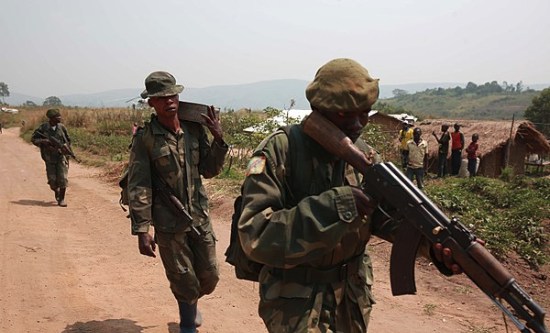- Details
-
Created: Tuesday, 14 April 2009 13:20
-
Written by Charles Chinweizu
FRFI 206 December 2008 / January 2009
Rwanda invaded the Democratic Republic of Congo (DRC, formerly Zaire) in 1996, 1998 and 2004. Rwanda’s fourth major incursion into DRC in 12 years, in October 2008, signalled an intensification of imperialist rivalry between the European Union (EU), which backs current President Joseph Kabila, and Britain and the US, which support Rwanda. The imperialists are battling for domination of mineral-rich DRC and for a stranglehold on the resource-rich region of central and eastern Africa. To camouflage the real reasons for the conflict, once again the distraction of ‘ethnic conflict’ is being promoted. Failure to remove Kabila from power may lead to the de facto annexation of eastern DRC and the balkanisation of the country. CHARLES CHINWEIZU reports.
Rwanda invades again
On 9 October Rwandan tanks entered eastern DRC via the North Kivu province on its border, to aid former Congolese army general Laurent Nkunda, leader of the National Congress for the Defence of the People (CNDP). The fighting between the CNDP, the DRC army (FARDC), the UN (MONUC) and various paramilitaries actually resumed on 28 August. Since then over 100 people have been killed, including more than 50 massacred at Kiwanja in November. Over 250,000 people were driven from their homes, fleeing south towards the provincial capital Goma, as shelters, clinics and homes were burnt down, refugee camps emptied, women and girls raped and property looted. At one stage 50,000 refugees went ‘missing’, their fate unknown. 12,000 have fled to neighbouring Uganda. This area of eastern DRC is clearly being depopulated – the people driven away in terror – and repopulated by people brought in from Rwanda and Uganda. The presence of Rwanda in eastern Congo is being consolidated so it becomes de facto part of Greater Rwanda.
Read more ...




